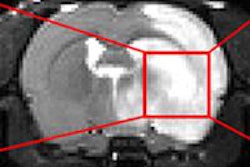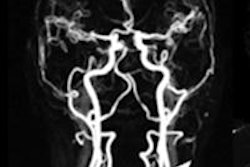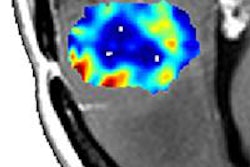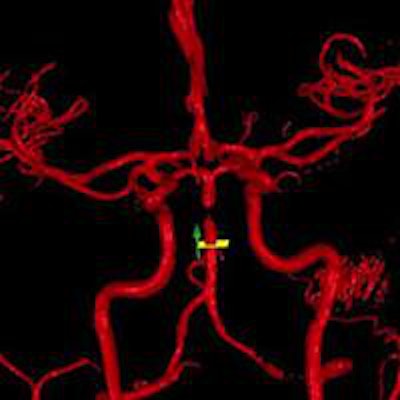
When patients experience blood-vessel blockage that could lead to a stroke, correcting the condition as soon as possible can be critical. Take the case of a female patient who was stuttering over four days.
She was referred to Dr. Fady Charbel, chairman of neurosurgery at the University of Illinois at Chicago (UIC) Hospital. He knew that an MRI scan and an MR angiogram showed some vessel blockage, and the woman was prescribed aspirin as a blood thinner, but her condition proceeded to worsen. A follow-up CT angiogram showed the same blockage, and her physician added Plavix, another blood thinner, to her regimen.
"It was assumed she would be OK," Charbel said, but the woman's condition continued to decline. "What was not recognized was how bad her blood flow was."
Charbel had previously conducted research on how restricted blood flow affects the brain, and the importance of quantifying that flow correctly. "If blood flow is reduced, these are very high-risk patients," he said. "If the flow is not reduced, these patients will do just fine. So, there is a dichotomy here."
To try to help the struggling patient, Charbel used a procedure based on quantitative MR angiography visualization software that he began developing some 15 years ago. The software, called NOVA (noninvasive optimal vessel analysis), is designed to quantify the volume, velocity, and direction of blood flowing through any vessel in the body through a QMRA, or quantitative MR angiogram.
The woman was brought into the MR angiography suite at UIC, where Charbel and colleagues reopened certain vessels in the brain in a "not-so-low-risk procedure," he said. "We told the family there was about a 20% risk of death or serious complication. Based on that flow information we knew, if we did not do anything, there was a 100% chance she would not make it."
With the additional information provided by NOVA and the QMRA, the woman's vessels were successfully reopened, and she now is on the road to recovery. "It was the lack of information that prevented people from recognizing how serious her condition was," Charbel recounted.
VasSol's beginning
Currently, NOVA and QMRA are marketed by VasSol, the River Forest, IL-based company that Charbel founded in 1999 and of which he currently serves as president. Some 14 years later, Charles Doherty, VasSol's CEO, said the company has reached a point in its development where it is "doing a reboot."
VasSol is trying to get the word out about its two products -- albeit with a small staff -- through expanded distribution.
"I don't think the future of the company is necessarily for us to do distribution on our own," Doherty said, "so we will be looking for a distributor or perhaps a large MRI company, which may be interested in licensing the software to put it directly on a scanner."
Thirty institutions worldwide, including hospitals in China, Italy, South Korea, Thailand, Switzerland, and the Czech Republic, currently use NOVA and QMRA.
 The above image shows a basilar artery dissection, where a portion of the arterial wall is torn and acts as a flap, impeding blood flow. On the image of the vasculature, it appears as a gap in the basilar artery. However, because basilar arterial flow was still in the indicated range, the patient elected not to have surgery. All images courtesy of VasSol.
The above image shows a basilar artery dissection, where a portion of the arterial wall is torn and acts as a flap, impeding blood flow. On the image of the vasculature, it appears as a gap in the basilar artery. However, because basilar arterial flow was still in the indicated range, the patient elected not to have surgery. All images courtesy of VasSol.
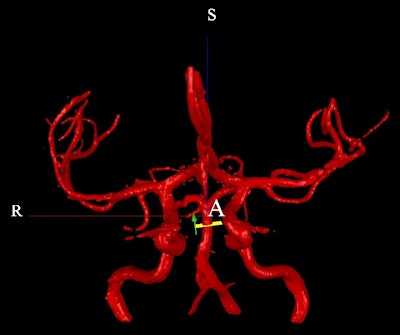 This image of the vasculature shows a perpendicular NOVA plane on the basilar artery, where Nova measures blood flow. The green arrow shows that blood is flowing normally to the posterior portion of the brain.
This image of the vasculature shows a perpendicular NOVA plane on the basilar artery, where Nova measures blood flow. The green arrow shows that blood is flowing normally to the posterior portion of the brain.Charbel's roots
Given his neurosurgical training, Charbel has long had an interest in stroke and vascular diseases of the brain, and his work has been influenced by patients with restricted blood vessels.
"What was very striking is that we saw a lot of patients -- and still do -- who get different opinions from different people who are very knowledgeable," he said. "Even we have different opinions on the same patient on different days. I was disturbed by this and felt there was a need for some quantitative approach [to the discrepancies]."
One solution would be to find a way to measure blood flow in blood vessels noninvasively. MRI, he added, is the "ideal way to do that, because MRI has no risk associated with it, because we use no contrast."
It took a number of years to perfect the software and the MR quantitative procedure. Image acquisition took as long as three to four hours, and postprocessing required an additional eight to nine hours. Given advances in technology over the past decade, the process today takes approximately 20 minutes on a PC, with no postprocessing required.
"It's all automated on-the-fly," Charbel said. "As the patient is having this study, the images are coming up, and you have the results as they come out of the magnet. I look at it as a new era of quantitative medicine."
VERITAS study
In 2008, VasSol began enrolling patients in the Vertebrobasilar Flow Evaluation and Risk of Transient Ischemic Attack and Stroke (VERITAS) study, which was funded by the National Institutes of Health (NIH). Participants include Washington University in St. Louis, Columbia University, and the University of California, Los Angeles.
The VERITAS study comes from one of Charbel's findings from using NOVA: that the brain can self-correct for any blockages in the cranial arteries. The initial study that prompted NIH funding included approximately 60 patients who were scheduled for surgery to clear blocked vascular arteries.
"If [patients] are getting sufficient blood flow to the brain, based on quantitative criteria that Dr. Charbel and colleagues developed, we will take them out of planned surgery and continue to treat the conditions medically," Doherty said. "Their conclusion was that we can reduce the number of surgeries based on knowing the hematology of the entire patient, and not just looking to determine if there is a blockage or not."
Expanded applications
VasSol has several potential extended applications for NOVA and QMRA in the works, including their use in the fingers and hands. The company is having some preliminary success regarding Raynaud's disease, which causes a person's fingers, toes, or other areas to become cold and turn blue or white. The condition can cause ulcers because of the lack of circulation.
"There is no [U.S. Food and Drug Administration (FDA)]-approved treatment for [Raynaud's], though there are multiple treatments that can be attempted medically and/or surgically," Charbel said. "However, there is no way to test the efficacy of such treatments."
Using NOVA and QMRA, Charbel has developed a "cold hands" protocol for Raynaud's disease that has been validated; "we can measure blood flow in the fingers down to 0.8 mm," he said. "Physicians can get a baseline, start treatment, and see if things improve. If not, they can go to the next treatment."
In addition, VasSol is looking at the possibility of using NOVA and QMRA for renal patients to measure blood flow in the renal arteries without using contrast agents. "There are a number of renal patients who cannot tolerate contrast agents," Doherty said.
Another area of exploration is measuring blood flow in the ophthalmic artery in the eye, given that some researchers believe glaucoma is a blood flow issue, he added.






